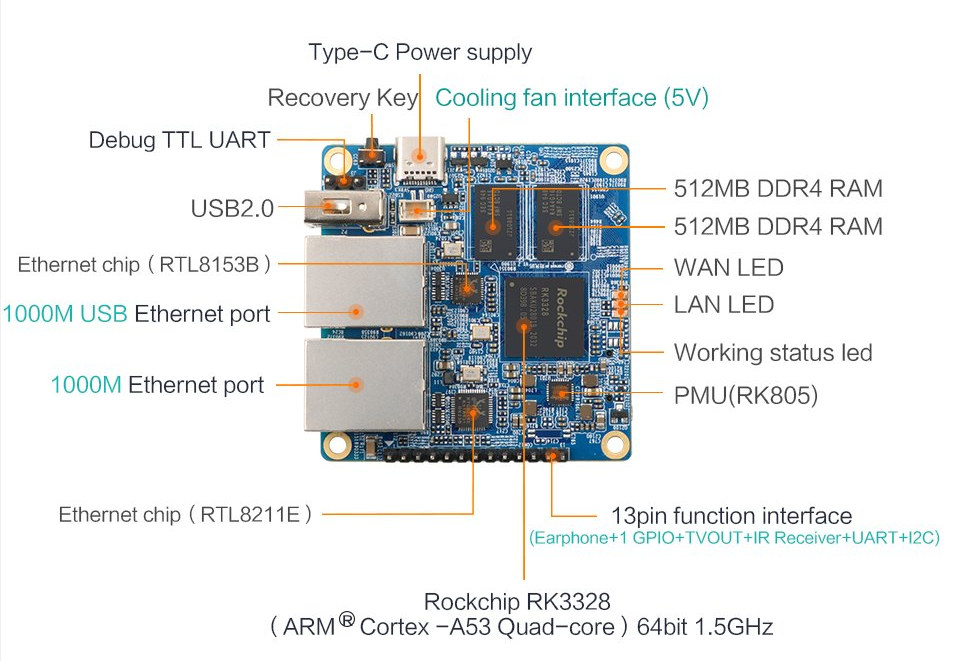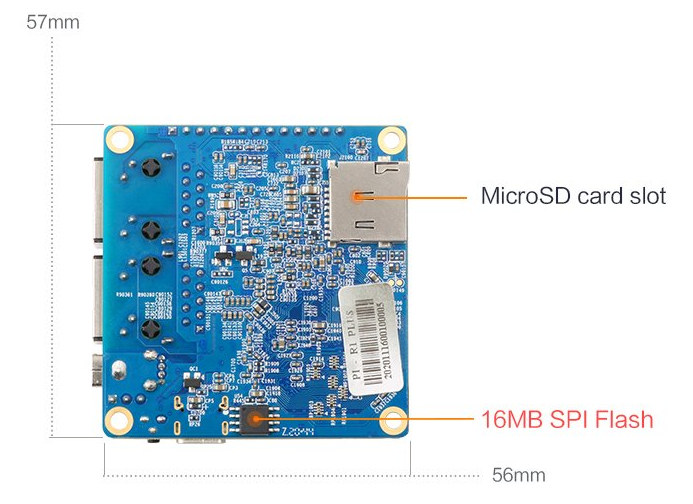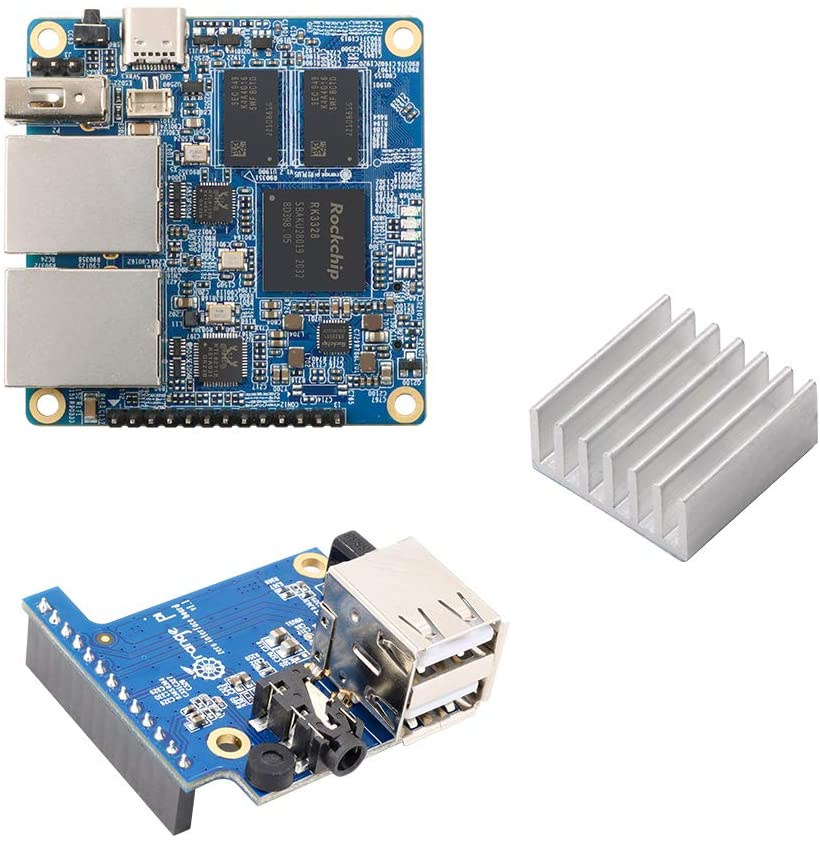FriendlyELEC NanoPi R2S SBC for headless applications with Rockchip RK3328 processor and dual Gigabit Ethernet ports is getting some competition, as with Orange Pi R1 Plus board, Shenzhen Xunlong Software has updated its Orange Pi R1 board powered by an Allwinner H2+ to RK3328 processor coupled with 1GB RAM, and offering dual Gigabit Ethernet ports, plus one USB port for router applications.
Orange Pi R1 Plus board specifications with highlights in bold or stricken through showing differences against R1 board:
- SoC –Rockchip RK3328 quad-core Cortex-A53 @ 1.5 GHz with Arm Mali-450MP2
- System Memory – 1GB DDR4 RAM
- Storage – MicroSD card slot, 16 MB SPI flash
- Connectivity – 2x Gigabit Ethernet via RTL8211E transceiver and RTL8153B USB 3.0 to Ethernet chip
+ 802.11 b/g/n WiFi (Realtek RTL8189ETV) with u.FL antenna connector and external antenna - USB – 1x USB 2.0 port, 1x USB-C OTG port
- Expansion headers
Unpopulated 26-pin “Raspberry Pi B+” header- 13-pin header with earphone, 1x GPIO, TV-out, UART, I2C, and IR receiver signals (note signals and pinout may have changed from Orange Pi R1)
- Debugging – 3-pin header for serial console, fan header
- Misc – Recovery key, WAN & LAN LEDs on board, “working status” LED.
- Power Supply – 5V via USB-C port or 2-pin header; RK805 PMU
- Dimensions – 57 x 56 mm (vs 60 x 45 mm)
The new Orange Pi R1 Plus has a significantly faster processor, quadruple the amount of RAM, support for Gigabit Ethernet instead of Fast Ethernet, but lacks built-in WiFi, as the company decided to provide a USB port instead for external WiFi adapters. There are also fewer I/Os available since the 26-pin header is gone.
But a better comparison might be against NanoPi R2S as both boards are pretty similar.
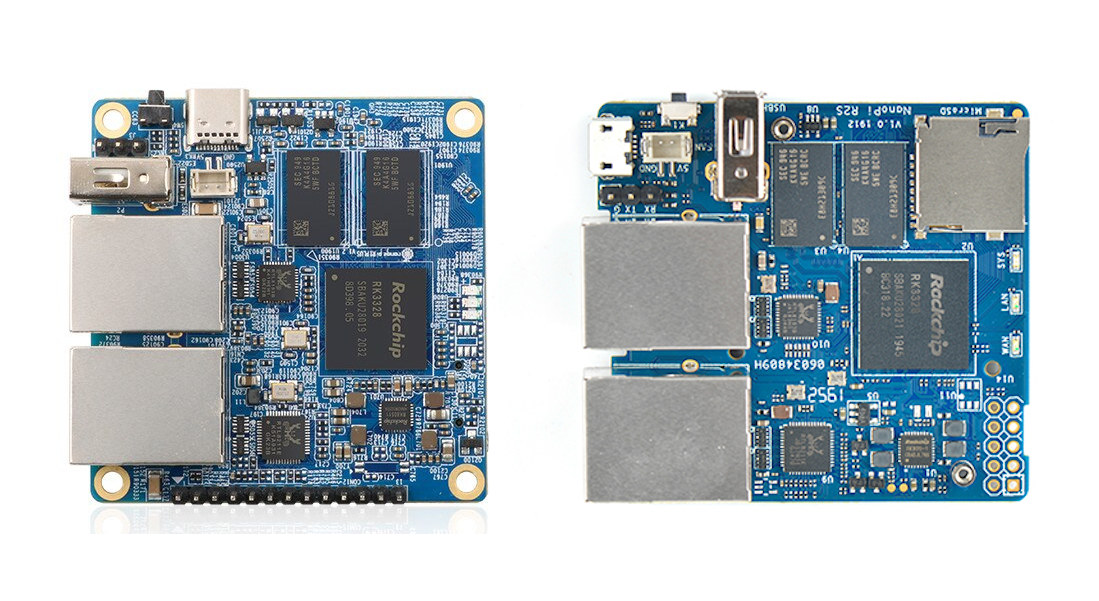
The specifications are also virtually identical with only some small difference in the layout, as well as a USB-C port being used instead of a micro USB port, and the R1 Plus board has three more I/O pins. It’s not impossible both boards may be able to share the same firmware images as well. Speaking about software, the company says its board supports Android 9, Ubuntu, Debian, and OpenWrt.
Orange Pi R1 Plus single board is sold for $21.99 and up on Aliexpress or Amazon US. That’s without a heatsink though, so you may consider spending $5 to $6 extra for the kit with a small heatsink and an expansion board with AV port and extra USB ports, or simply use your own heatsink plus thermal paste.
Since the USB interface is no longer exposed through the 13-pin connector.m the USB port will not work, so the expansion board is only useful for audio and video through the 3.5mm AV jack.
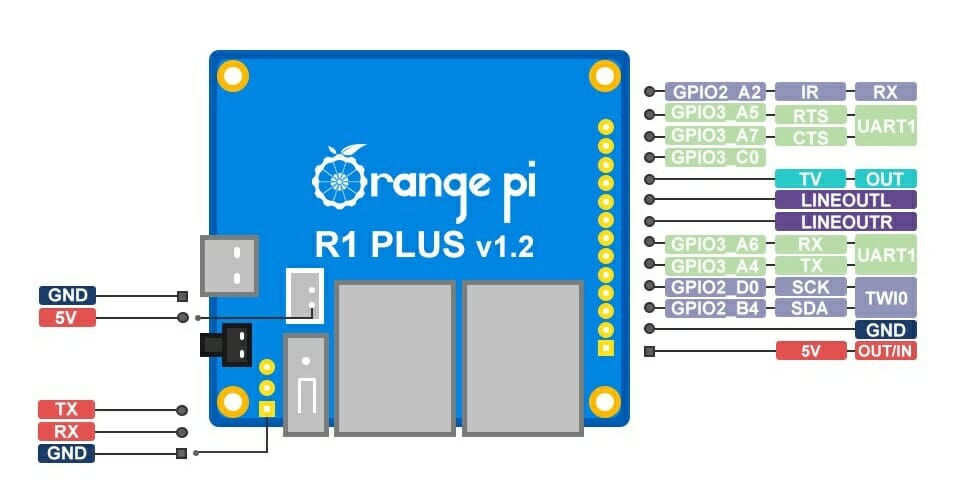

Jean-Luc started CNX Software in 2010 as a part-time endeavor, before quitting his job as a software engineering manager, and starting to write daily news, and reviews full time later in 2011.
Support CNX Software! Donate via cryptocurrencies, become a Patron on Patreon, or purchase goods on Amazon or Aliexpress


